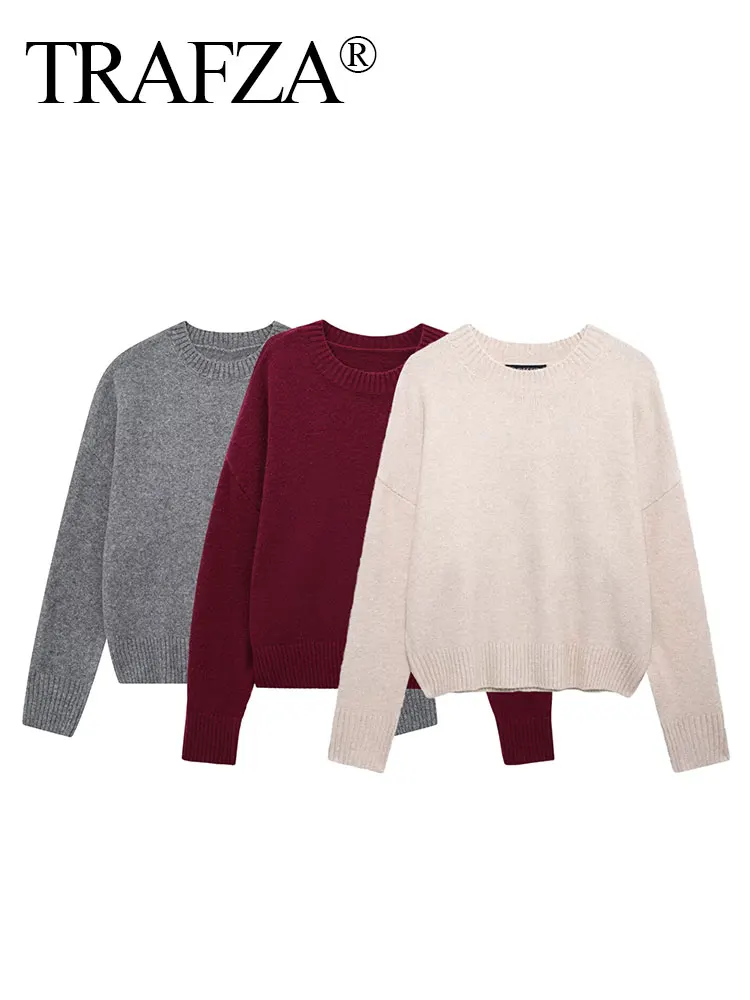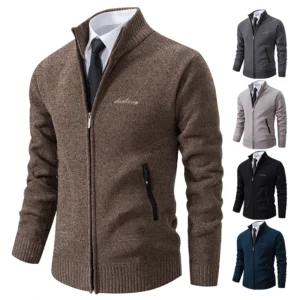1. Introduction: Understanding the World of Luxury Cashmere Textures
Cashmere stands as one of the world’s most coveted natural fibers, renowned for its incredible softness, exceptional warmth, and luxurious comfort. This premium textile, harvested from the soft undercoat of cashmere goats, has earned its place at the pinnacle of luxury fabrics thanks to its remarkable qualities and the meticulous processes required to transform it into wearable art.
When exploring the world of fine cashmere, understanding the nuances of texture becomes essential to appreciating what makes each garment unique. The texture of cashmere not only affects how a piece feels against your skin but also influences its appearance, durability, and overall functionality. Two primary textural variations dominate the cashmere landscape: traditional and brushed cashmere.
These distinct textures arise from different production methods and finishing techniques, each creating a unique sensory experience for the wearer. For those seeking to build a quality wardrobe, understanding the styling tips for cashmere cardigans begins with recognizing these fundamental texture differences.
In this comprehensive guide, we’ll explore the distinctive characteristics of both brushed and traditional cashmere, helping you understand not just what makes each unique, but which might better suit your preferences and needs. Whether you’re considering adding to your collection of cashmere sweaters or simply wish to deepen your knowledge of luxury textiles, understanding these textural differences will enhance your appreciation of fine cashmere.
2. The Essential Attributes of Traditional Cashmere
Traditional cashmere represents the classic expression of this luxury fiber, characterized by a sleek, refined texture that has defined premium knitwear for generations. This conventional finishing method preserves the natural characteristics of cashmere fibers, resulting in a distinct texture and appearance that cashmere connoisseurs have come to treasure.
Traditional cashmere possesses several defining characteristics:
Smooth Surface Texture: Traditional cashmere features a clean, even surface with minimal fiber protrusion, giving it a polished appearance.
Defined Stitch Visibility: The weave or knit pattern remains clearly visible, showcasing the craftsmanship and structural details of the garment.
Natural Luster: It exhibits a subtle, natural sheen that catches light elegantly without appearing shiny or artificial.
Crisp Drape: The fabric hangs with a precise, elegant drape that creates clean lines and maintains its shape beautifully.
Dense Hand-Feel: When touched, traditional cashmere feels substantial and compact, though remarkably light for its warmth.
Refined Softness: While incredibly soft, the softness of traditional cashmere feels more contained and structured compared to other finishing methods.
This classical approach to cashmere processing maintains the integrity of the fiber’s natural structure. By preserving the alignment and composition of the cashmere fibers, traditional finishing creates a fabric with exceptional durability while still delivering the incomparable softness that makes cashmere so desirable.
Understanding the ultimate guide to brushed cashmere softness helps highlight how traditional cashmere differs in its refined elegance and structured feel. Traditional cashmere’s timeless appeal makes it particularly well-suited for women’s cashmere pullovers and other garments where a clean, defined appearance is desired alongside luxurious comfort.
3. Traditional Cashmere: Production Methods and Manufacturing Process
Creating traditional cashmere involves a meticulous production process that has been refined over centuries. Each step in this process contributes to the distinctive texture and quality that defines traditional cashmere garments.
Fiber Selection and Sorting: Production begins with careful selection of the finest cashmere fibers, typically focusing on those between 14-16 microns in diameter and exceeding 36mm in length. These premium fibers are meticulously sorted by hand to ensure consistent quality.
De-hairing and Cleaning: The raw cashmere undergoes a gentle yet thorough cleaning process to remove impurities, dirt, and coarse guard hairs. This critical step separates the soft undercoat fibers from coarser outer hairs while preserving the integrity of the delicate fibers.
Carding and Combing: Clean fibers are carefully carded to align them in the same direction, then combed to remove any remaining short fibers or impurities. This process creates a uniform fiber composition that contributes to traditional cashmere’s smooth finish.
Spinning: The prepared fibers are spun into yarn using techniques that maintain fiber alignment and create the ideal balance of twist. Traditional cashmere typically employs a moderate twist that provides durability while maintaining softness.
Knitting or Weaving: The yarn is then crafted into fabric through either knitting or weaving processes. The tension and density are carefully controlled to achieve the desired weight, drape, and texture characteristic of traditional cashmere.
Minimal Finishing: Unlike other cashmere types, traditional cashmere undergoes minimal finishing. The fabric may be gently washed and pressed, but the natural fiber structure is preserved without aggressive treatments that would alter its inherent characteristics.
Quality Control: The finished fabric undergoes rigorous inspection to ensure consistent texture, even color distribution, and structural integrity. Any irregularities are identified and addressed before the final garment production.
This careful preservation of the natural fiber structure results in traditional cashmere’s characteristic smoothness, subtle luster, and refined hand-feel. The minimal finishing approach maintains the fiber’s natural resilience and durability, contributing to the longevity that makes traditional cashmere garments treasured heirlooms.
4. The Distinctive Characteristics of Brushed Cashmere
Brushed cashmere represents a luxurious evolution of traditional cashmere, created through an additional specialized finishing process that transforms the texture into something remarkably different. This unique treatment elevates the natural softness of cashmere to create an almost cloud-like tactile experience.
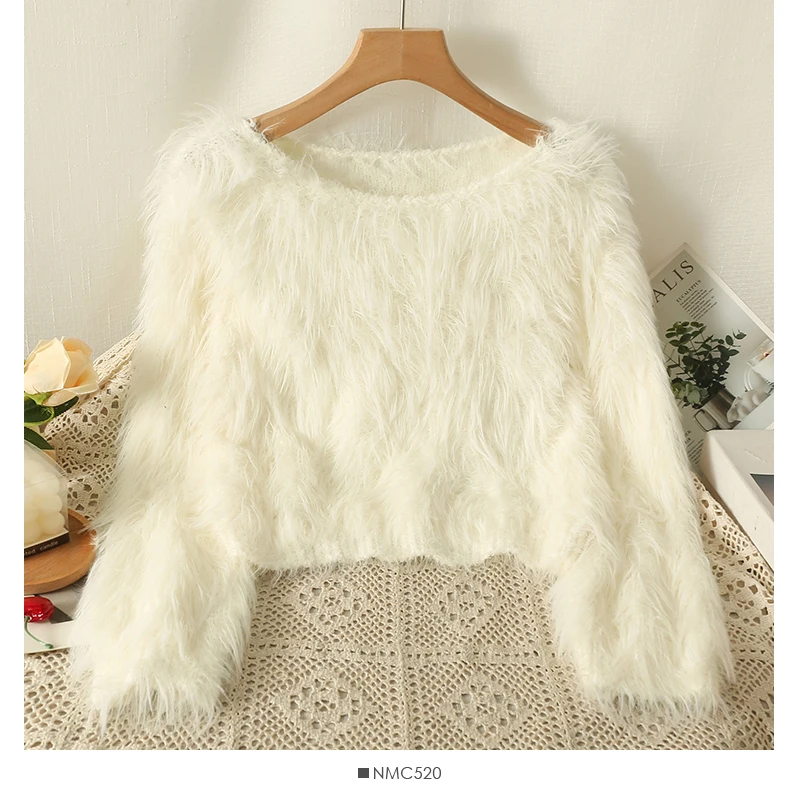
The distinctive attributes of brushed cashmere include:
Ultra-Plush Texture: Brushed cashmere features an extraordinarily soft surface with a plush, raised pile that feels incredibly gentle against the skin.
Hazy, Diffused Appearance: The brushed surface creates a soft focus effect that gently obscures stitch definition and creates a subtle halo around the garment.
Enhanced Loft: The brushing process increases the volume and loft of the fabric, creating a sumptuous depth not found in traditional cashmere.
Exceptional Warmth: The raised fibers trap additional air, enhancing the already impressive insulating properties of cashmere.
Pillowy Hand-Feel: When touched, brushed cashmere yields more readily to pressure, creating a cushioned, enveloping sensation.
Matte Finish: Unlike traditional cashmere’s subtle sheen, brushed cashmere typically displays a softer, more matte appearance.
This special texture has made brushed cashmere sweaters increasingly popular for those seeking the ultimate in sensory luxury. The brushing process effectively amplifies cashmere’s natural softness while creating a distinctively modern textural experience.
The plushness of brushed cashmere makes it especially appealing for garments where comfort is paramount. Its cloud-like softness creates an almost therapeutic tactile experience, while its enhanced warmth makes it particularly well-suited for colder climates or as a luxurious layer during winter months.
While maintaining the premium quality of fine cashmere, the brushed variety offers a contemporary alternative to traditional finishing, appealing to those who prioritize maximum softness and comfort in their luxury knitwear.
5. Brushed Cashmere: The Specialized Manufacturing Process
The transformation of traditional cashmere into brushed cashmere requires a specialized additional manufacturing step that fundamentally alters the fabric’s surface characteristics. This meticulous process begins with high-quality traditional cashmere as its foundation.
After the standard cashmere production steps are completed, the brushing process begins:
The finished traditional cashmere fabric undergoes careful mechanical brushing using specialized equipment fitted with fine wire or teasel heads. These implements gently agitate the surface of the fabric, breaking the bonds that hold some fibers flat against the weave.
As the brushing tools move across the fabric surface, they lift and separate individual fibers, creating a fine layer of raised fibers perpendicular to the fabric base. This process must be precisely controlled—too little brushing won’t achieve the desired softness, while excessive brushing risks compromising the fabric’s structural integrity.
The direction of brushing significantly impacts the final texture. Most quality brushed cashmere undergoes multi-directional brushing to create an even, consistent surface texture. The speed, pressure, and duration of brushing are all carefully calibrated based on the specific characteristics of each fabric batch.
After brushing, the fabric undergoes a gentle steaming process that helps set the raised fibers in their new position while relaxing any tension created during brushing. Finally, a light pressing helps create a uniform surface while maintaining the characteristic loft.
The success of the brushing process depends heavily on the quality of the underlying cashmere. Longer fibers respond better to brushing, creating a luxurious, durable texture, while shorter fibers may result in excessive fiber release or pilling. This explains why truly premium brushed cashmere requires exceptionally high-quality raw materials.
When creating versatile pieces like those featured in styling cashmere cardigan versatile looks, manufacturers must carefully balance the degree of brushing to achieve the desired softness while preserving the garment’s longevity and shape retention.
6. Tactile Experience: How Each Texture Feels Against the Skin
The most immediate and perhaps most significant difference between brushed and traditional cashmere lies in how each feels against the skin—a deeply personal experience that often determines preference.
Traditional cashmere greets the skin with a smooth, refined softness that feels simultaneously substantial and lightweight. The sensation is one of gentle caress, with a silky glide that moves effortlessly across the skin. There’s a certain crispness to its softness—a controlled luxury that feels sophisticated and elegant. As it warms to body temperature, traditional cashmere seems to meld with the skin, creating a seamless comfort that remains consistently pleasant throughout wear.
In striking contrast, brushed cashmere delivers an immediate sensation of enveloping plushness. The initial touch feels almost cloud-like, with countless raised fibers creating a cushioned barrier between skin and fabric. Where traditional cashmere glides, brushed cashmere embraces—surrounding the wearer in a cocoon of extraordinary softness. This texture creates a more pronounced initial awareness of the fabric, a conscious luxury that continues to delight the senses throughout wear.
Movement highlights further differences between these textures. Traditional cashmere maintains its sleek drape as you move, flowing with the body while retaining its structured elegance. Brushed cashmere, meanwhile, creates a more dynamic tactile experience, with its raised fibers responding to movement with subtle shifts in pressure and sensation against the skin.
For those considering how to incorporate cashmere into their wardrobe, understanding these tactile differences helps in selecting pieces for different needs. The 15 stylish ways to wear cashmere cardigans might suggest traditional cashmere for more structured, office-appropriate styles, while brushed varieties might be preferred for relaxed, comfort-focused ensembles.
7. Visual Appeal: Aesthetic Differences Between the Textures
Beyond their tactile differences, brushed and traditional cashmere present distinctly different visual aesthetics that significantly impact the appearance of garments made from each.
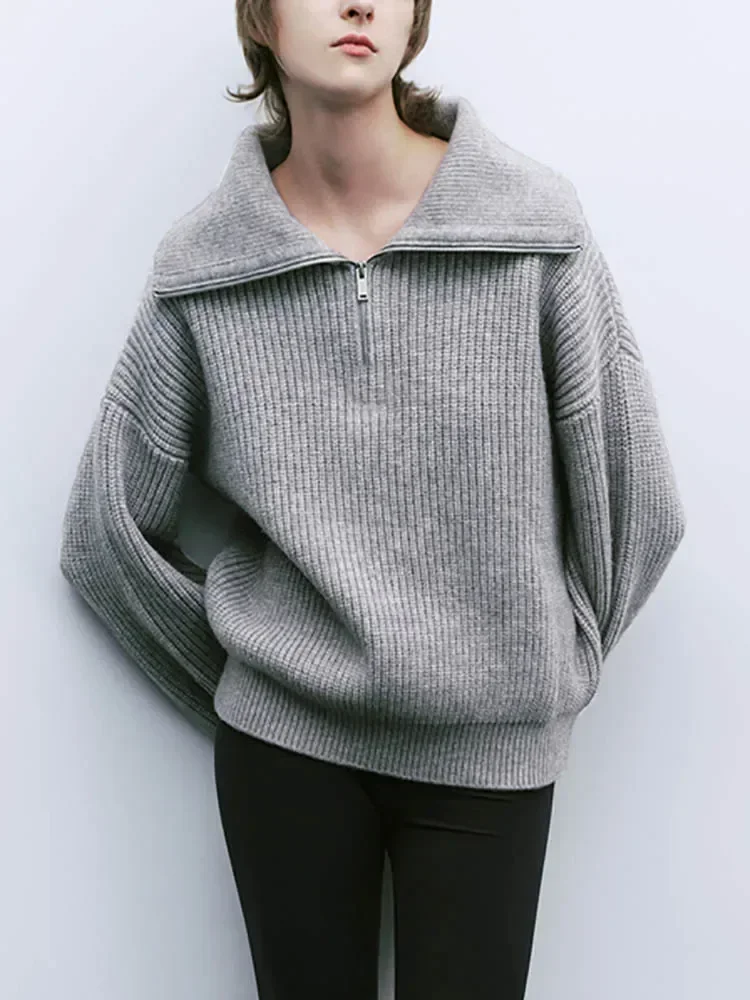
Traditional cashmere displays a clean, defined surface where light interacts with the fabric to create subtle highlights and shadows that accentuate the garment’s structure. The stitch definition remains clearly visible, showcasing intricate knitting patterns and textural details with precision. Colors appear rich and clear, with a depth and consistency that highlights the purity of the dye. This texture creates garments with crisp, elegant lines and a refined silhouette that speaks to timeless luxury.
Brushed cashmere presents a noticeably different visual character. The raised fibers create a soft-focus effect that diffuses light rather than reflecting it, resulting in a gentle halo around the garment. This slight blurring effect softens the appearance of stitch patterns, creating a more relaxed, casual elegance. Colors take on a softened quality—still rich but with a subtle depth that comes from light interacting with the raised fiber surface. The visual effect is one of cozy sophistication, with a contemporary appeal that feels both luxurious and approachable.
The structure of garments also differs visually between these textures. Traditional cashmere maintains more defined edges and cleaner lines, while brushed cashmere creates softer boundaries and a more relaxed structural appearance. This difference becomes particularly noticeable in how collars, cuffs, and hems present themselves, with traditional cashmere offering sharper definition and brushed varieties showing a gentler transition.
These visual differences make each texture suitable for different style preferences and occasions, from the sharp sophistication of traditional cashmere to the soft modernity of brushed varieties.
8. Comprehensive Comparison: Brushed vs. Traditional Cashmere
To help you understand the full spectrum of differences between these two luxurious textures, here’s a comprehensive side-by-side comparison across key attributes:
| Attribute | Traditional Cashmere | Brushed Cashmere |
|---|---|---|
| Surface Texture | Smooth, even, defined | Fluffy, raised, cloud-like |
| Softness Level | Refined, silky softness | Ultra-plush, cushioned softness |
| Warmth | Excellent warmth-to-weight ratio | Enhanced warmth due to raised fibers |
| Visual Appearance | Clear stitch definition, subtle sheen | Hazy stitch definition, matte finish |
| Drape | Structured, elegant flow | Softer, more relaxed drape |
| Durability | Typically more resilient to wear | May show signs of wear sooner |
| Pilling Tendency | Moderate resistance to pilling | More prone to pilling without proper care |
| Weight Perception | Feels light and substantial | Feels lofty and enveloping |
| Color Presentation | Clear, defined coloration | Softened, diffused color appearance |
| Price Point | Premium | Often higher premium |
Traditional cashmere excels in longevity and maintaining its appearance over time. Its tighter fiber structure typically shows less pilling and withstands repeated wearing with minimal change to its surface characteristics. For investment pieces intended for years of wear, traditional cashmere often represents the more practical choice while still delivering exceptional luxury.
Brushed cashmere delivers unparalleled initial softness but requires more careful maintenance to preserve its special texture. The raised fibers that create its distinctive feel can be more vulnerable to abrasion, potentially leading to earlier signs of wear in high-friction areas.
For those interested in maintaining their luxury garments, understanding whether hand washing vs dry cleaning cashmere is better becomes especially important for brushed varieties, which benefit from gentler cleaning methods to preserve their delicate surface texture.
9. Ideal Applications: Best Uses for Each Cashmere Texture
Each cashmere texture lends itself to specific garment types and uses, making certain styles more suitable depending on the desired aesthetic and function.
Traditional Cashmere Excels In:
* Structured garments that benefit from clean lines and defined shapes
* Professional attire where refined appearance matters
* Lightweight layering pieces that need to drape smoothly
* Classic knitwear styles like crew necks and V-necks
* Pieces intended for transitional weather where weight control is important
* Garments featuring detailed knitting patterns that should remain visible
Traditional cashmere’s smooth finish and elegant drape make it particularly well-suited for business-appropriate knitwear and pieces that complement tailored clothing. Its ability to maintain shape and structure allows for versatile styling options across different settings.
Brushed Cashmere Excels In:
* Cozy, comfort-focused pieces designed for relaxation
* Cold-weather garments where maximum warmth is desired
* Oversized styles that emphasize casual luxury
* Scarves and accessories that directly contact sensitive skin
* Loungewear and home comfort pieces
* Statement pieces where tactile luxury is a primary feature
The exceptional softness of brushed cashmere makes it ideal for oversized cashmere sweaters and wrap-style garments that create a sense of enveloping comfort. Its enhanced warmth and plush feel create an experience of relaxed indulgence perfect for leisure moments.
When building a complete cashmere wardrobe, many connoisseurs incorporate both textures: traditional cashmere for work and structured occasions, brushed cashmere for weekends and comfort-focused moments. This combination allows enjoyment of the full spectrum of cashmere’s luxurious possibilities while having appropriate options for every setting.
10. Care and Maintenance: Preserving Each Cashmere Texture
Proper care is essential for maintaining the distinctive qualities of both cashmere textures, though each requires slightly different maintenance approaches to preserve their unique characteristics.
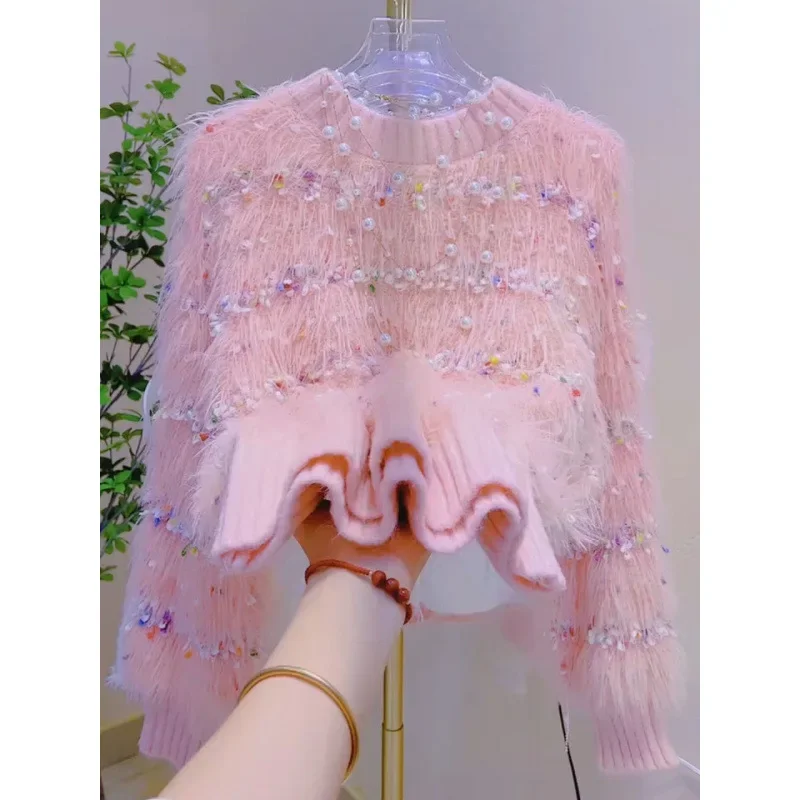
Traditional Cashmere Care:
* Hand wash using lukewarm water and gentle cashmere shampoo or mild detergent
* Minimize agitation to maintain the smooth surface texture
* Rinse thoroughly without wringing or twisting
* Reshape while damp and dry flat on a clean towel away from direct heat or sunlight
* Store folded rather than hung to preserve shape
* Use a cashmere comb periodically to remove pills while maintaining the smooth surface
Brushed Cashmere Care:
* Hand wash with extra care, using minimal agitation to protect raised fibers
* Consider using a wash bag for additional protection
* Press gently between towels to remove moisture rather than squeezing
* Dry flat with minimal handling to preserve the loft of the brushed texture
* Once dry, a very gentle steaming (not ironing) can help revitalize the soft texture
* Store with particular care to avoid compression that might flatten the raised fibers
Both textures benefit from seasonal storage in breathable cotton bags with cedar blocks to deter moths. For brushed cashmere, extra space in storage helps maintain its distinctive texture, while traditional cashmere can be folded more compactly without compromising its qualities.
Over time, traditional cashmere tends to soften slightly while maintaining its fundamental character. Brushed cashmere may gradually lose some of its initial loft but can often be refreshed with proper care techniques. For significant rejuvenation of either texture, professional cashmere specialists can provide cleaning and restoration services beyond what’s possible at home.
For elegant pieces like cashmere turtlenecks, these careful maintenance routines ensure that the luxury and comfort of fine cashmere can be enjoyed for many years, making them true investment pieces in a quality wardrobe.
Cashmere Wrap Sweaters, Women's Cashmere Pullovers
$75.89 Select options This product has multiple variants. The options may be chosen on the product pageCashmere Cable Knit Sweaters, Women's Cashmere Pullovers
Price range: $111.82 through $112.93 Select options This product has multiple variants. The options may be chosen on the product pageCropped Cashmere Sweaters, Women's Cashmere Pullovers
$155.77 Select options This product has multiple variants. The options may be chosen on the product page- Price range: $102.02 through $109.37 Select options This product has multiple variants. The options may be chosen on the product page
Oversized Cashmere Sweaters, Plus Size Cashmere Sweaters, Women's V-Neck Cashmere Sweaters
$136.87 Select options This product has multiple variants. The options may be chosen on the product page- Price range: $108.11 through $130.03 Select options This product has multiple variants. The options may be chosen on the product page
11. Making Your Selection: Which Cashmere Texture Is Right For You?
Choosing between brushed and traditional cashmere ultimately comes down to personal priorities, lifestyle needs, and individual preferences. Consider these scenarios to help determine which texture might better align with your specific situation:
Traditional cashmere might be your ideal choice if:
* You value longevity and durability in your luxury investments
* Your style tends toward classic, refined aesthetics
* You need versatile pieces that transition easily from casual to formal settings
* You appreciate defined structure and clean lines in your knitwear
* You live in a variable climate where adaptable layering pieces are essential
Brushed cashmere might better suit your needs if:
* Maximum softness and tactile comfort are your top priorities
* You’re creating a luxury lounge or weekend wardrobe
* You tend to gravitate toward relaxed, contemporary styling
* You live in a particularly cold climate where warmth is paramount
* You’re seeking the most indulgent sensory experience from your knitwear
Many cashmere enthusiasts find that incorporating both textures into their wardrobe provides the most comprehensive luxury experience. A collection of cashmere cardigans might include traditional finishes for work and structured occasions, complemented by brushed pieces for weekend relaxation and home comfort.
When making your selection, also consider your sensitivity to texture. Those with especially sensitive skin often find brushed cashmere’s ultra-soft surface particularly appealing, while others prefer the sleeker feel of traditional cashmere against the skin.
Remember that quality transcends texture preference—exceptional cashmere in either finish will provide a superior experience compared to lower-quality versions. Focus first on selecting well-made pieces from reputable sources, then choose the texture that best aligns with your personal preferences and intended use.
12. Common Questions About Cashmere Textures
Is brushed cashmere more prone to pilling than traditional cashmere?
Yes, the raised fibers in brushed cashmere can make it somewhat more susceptible to pilling. However, high-quality brushed cashmere made from longer fibers will still offer good pill-resistance compared to lower-quality traditional cashmere.
Which texture provides more warmth?
Brushed cashmere typically provides slightly more warmth because the raised fibers trap additional air, enhancing insulation. However, the difference may be minimal in high-quality pieces.
Can traditional cashmere become brushed over time with wear?
No, traditional cashmere won’t naturally transform into brushed cashmere. The brushing process is a specific manufacturing technique that can’t be replicated through normal wear. Traditional cashmere may soften slightly over time but will maintain its fundamental character.
Why does brushed cashmere often cost more?
The additional processing step required to create brushed cashmere adds to production costs. Furthermore, brushed cashmere requires higher-quality starting fibers (longer staples) to withstand the brushing process without compromising integrity.
Which texture is better for travel?
Traditional cashmere typically performs better for travel as it resists wrinkles more effectively and maintains its appearance with less care during trips. It also tends to pack more compactly.
Does the texture affect how colors appear in cashmere?
Yes, traditional cashmere displays colors with more definition and clarity, while brushed cashmere diffuses color slightly, creating a softer, more muted appearance even with the same dye.
Can you brush traditional cashmere at home to create a brushed effect?
This isn’t recommended. The commercial brushing process is precisely controlled using specialized equipment. Attempting to brush cashmere at home risks damaging the fabric structure.
Does one texture last longer than the other?
Generally, traditional cashmere tends to maintain its original appearance longer with regular wear, though both textures can be long-lasting with proper care.
13. Beyond Basic Textures: Special Cashmere Finishes and Blends
The world of cashmere extends beyond the traditional and brushed varieties into specialized textures and innovative blends that offer unique characteristics for specific needs and preferences.
Several specialty cashmere textures have emerged in recent markets, including rippled cashmere (featuring intentional textural patterns), felted cashmere (with a denser, more insulating finish), and double-faced cashmere (with different textures on each side for versatility).
Cashmere blends represent another textural frontier, combining cashmere with complementary fibers to achieve specific performance characteristics. Common blends include cashmere-silk (for enhanced drape and subtle sheen), cashmere-cotton (for increased durability and reduced warmth), and cashmere-wool (for improved resilience and cost-effectiveness).
Technological innovations continue to create new possibilities in cashmere texture. Advanced treatment methods now create water-resistant cashmere without compromising softness, while other innovations focus on enhancing pilling resistance through fiber stabilization techniques.
These specialized treatments and blends create exciting possibilities for specific applications, from performance-oriented cashmere for active outdoor use to ultra-light summer cashmere that expands the seasonal wearability of this luxury fiber.
For those exploring different style expressions, versatile cashmere cardigan styles showcase how various cashmere textures can create distinctly different visual and functional results within the same garment category, offering inspiration for creating a well-rounded luxury knitwear collection.
14. The Environmental and Ethical Considerations of Cashmere Production
The texture and quality of cashmere are directly linked to sustainable and ethical production practices in ways that conscientious consumers should understand. Premium cashmere texture begins with fiber selection—longer, finer fibers not only create superior texture but also represent a more sustainable approach to cashmere production.
Higher-quality fibers require less processing to achieve desirable textures, reducing environmental impact through decreased water and energy consumption. This principle applies to both traditional and brushed varieties, though traditional processing generally involves fewer steps overall.
The longevity factor represents another important environmental consideration. Well-made cashmere in either texture will last for many years with proper care, making it a more sustainable choice than lower-quality alternatives that require frequent replacement. Traditional cashmere’s slight edge in durability gives it a marginally better sustainability profile in terms of lifecycle analysis.
Ethical production practices also influence texture quality. Cashmere harvested through humane, non-harmful combing (rather than shearing) tends to yield longer, stronger fibers that create superior textures. Additionally, herding practices that prevent overgrazing help maintain fiber quality while protecting fragile ecosystems.
Premium cashmere producers often implement more rigorous quality control throughout the production chain, resulting in better textures while typically employing more sustainable and ethical practices. This creates a virtuous cycle where quality, ethics, and sustainability reinforce one another.
By selecting high-quality cashmere from responsible sources, consumers can enjoy superior texture while supporting practices that help preserve this exceptional fiber for future generations.

